From Construction Camps to Event Villages: The Versatility of Lida Group’s Temporary Prefab Mobile House Units
2025-Oct-28 09:26:59
By Admin
Introduction
In an era defined by rapid urbanization, climate volatility, and evolving workforce demands, the construction industry faces unprecedented pressure to deliver infrastructure solutions that are fast, cost-effective, and adaptable. Temporary prefabricated mobile housing has emerged as a transformative answer to these challenges, breaking free from its traditional association with basic labor accommodations to become a cornerstone of diverse environments—from remote mining sites to luxury event villages. At the forefront of this revolution stands Lida Group, a global manufacturer whose modular solutions redefine the boundaries of portable construction.
With over two decades of expertise, Lida Group has engineered a product ecosystem that transcends conventional limitations. Its prefab units, ranging from K-model and T-model structures to flat-pack container houses, integrate advanced steel engineering, eco-friendly materials, and modular flexibility to serve sectors as varied as resource extraction, disaster relief, tourism, and large-scale events. This article explores how Lida’s innovations have transformed temporary housing from utilitarian camps to multifunctional spaces, examining the technical ingenuity, real-world applications, and market impact of its versatile designs.
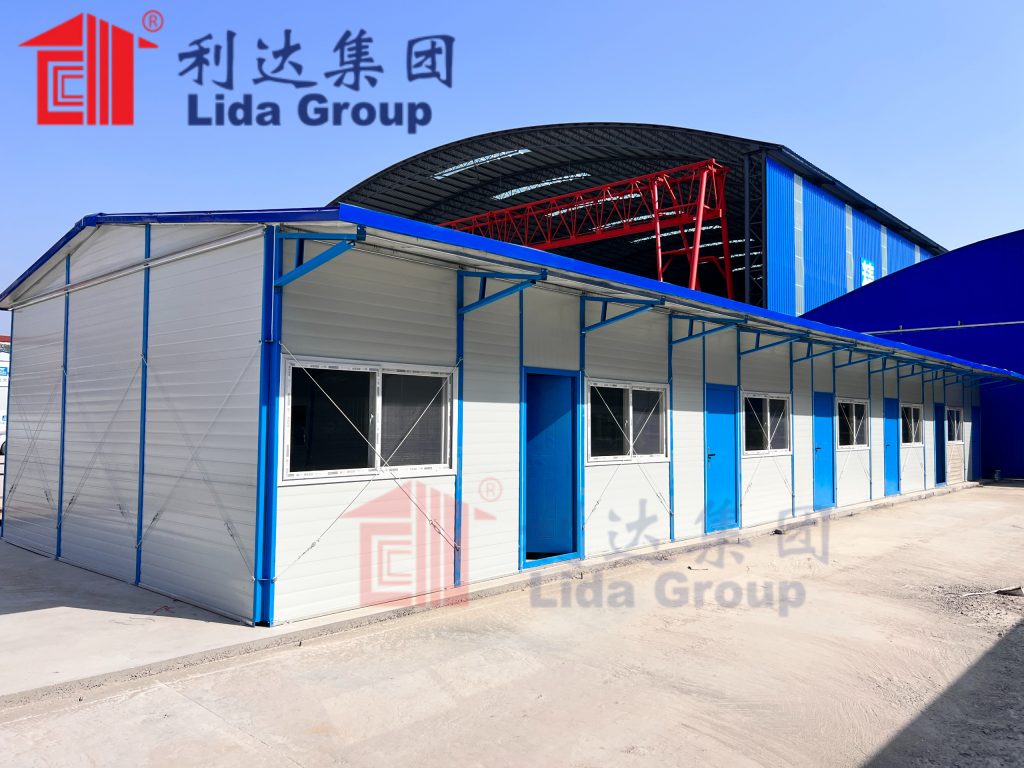
1. The Engineering Backbone: What Makes Lida’s Prefab Units Versatile?
1.1 Core Structural Design
Lida’s modular systems are built on a foundation of precision-engineered steel structures that balance durability with mobility. The primary framework employs square steel tubes for columns and C-channel steel for roof trusses and purlins, creating a robust skeleton capable of supporting up to three stories. This design achieves remarkable resilience: 8-grade earthquake resistance, 0.6–1.5 kN/m² wind load tolerance, and fire resistance of up to 3 hours. For extreme environments, specialized variants use S355J2 polar-grade alloy steel, which maintains ductility even at -60°C, as demonstrated in Canada’s Diavik Diamond Mine project.
The wall and roof systems further enhance adaptability. Lida utilizes 75–150mm sandwich panels filled with fiberglass, EPS, or aerogel insulation (achieving R-40 values), providing thermal efficiency that maintains habitable temperatures from -55°C in the Arctic to 50°C in desert regions. Exterior cladding options—from galvanized steel sheets to ceramic-embedded panels—offer protection against corrosion, ice erosion, and UV degradation, extending service life to 20 years or more.
1.2 Modular Flexibility
A key driver of versatility is Lida’s modular design philosophy, which treats each unit as a interchangeable building block. Standard 20ft (6055×2435×2896mm) and 40ft (12192×2435×2896mm) units can be horizontally linked or vertically stacked, while expandable models double interior space in minutes. This flexibility enables configurations ranging from single-room guardhouses to complex villages with dormitories, kitchens, clinics, and recreation halls.
Flat-pack technology amplifies mobility: all components are packed into rectangular boxes for shipping, reducing transport costs by 40% compared to pre-assembled units. On-site installation requires only basic tools and minimal labor—six workers can assemble one unit in 8 hours, with entire camps operational within days. Disassembly is equally efficient, allowing units to be relocated and reused across multiple projects, aligning with circular economy principles.
1.3 Sustainable Innovation
Lida’s commitment to sustainability enhances its products’ appeal across sectors. Nearly 100% of materials—including galvanized steel and recyclable sandwich panels—are reusable, minimizing construction waste. Energy efficiency features such as solar-ready roofs, rainwater harvesting systems, and phase-change insulation panels reduce operational costs by up to 45% in remote locations. These attributes have earned compliance with EU green building standards and domestic energy regulations, making Lida’s units a preferred choice for eco-conscious clients.
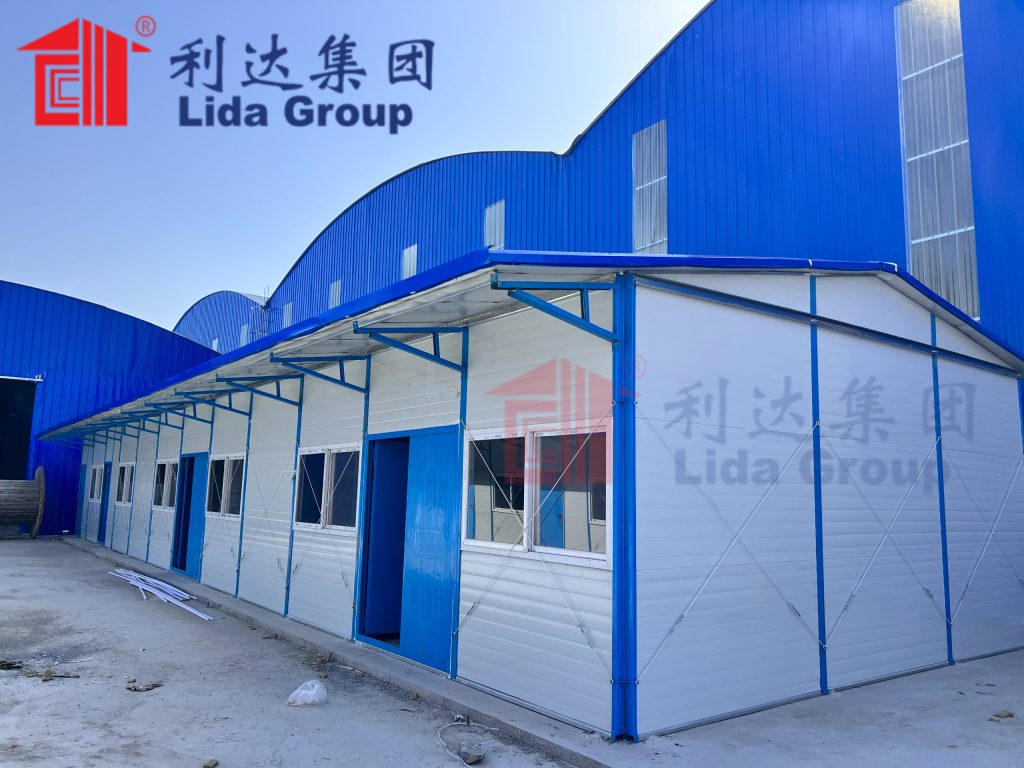
2. From Hard Hat Camps to Critical Infrastructure: Industrial Applications
2.1 Construction and Resource Extraction Camps
The origins of Lida’s versatility lie in its industrial roots, where rapid deployment and durability are non-negotiable. For construction sites—such as Qingdao’s Jiaodong International Airport and the Jiaozhou Bay Bridge—Lida’s units serve as dormitories, offices, and mess halls, accommodating thousands of workers while adhering to tight project timelines. A standout example is the 2025 oil & gas construction camp in Eastern Europe, where modular units equipped with fire suppression systems were deployed in 25 days, 37 days ahead of schedule.
In resource extraction, Lida’s units thrive in the harshest conditions. At Canada’s Diavik Diamond Mine, where temperatures plummet to -55°C, the company’s Arctic-specific designs address permafrost degradation and energy inefficiency. Aerogel-enhanced insulation, airlock entry systems, and waste heat recovery reduce diesel consumption by 45%, while cryogenic-welded steel frames resist brittle fracture. Similarly, in Malaysia’s Cameron Highlands Hydroelectric Project, Lida’s prefab complexes withstood monsoon rains and seismic activity, ensuring uninterrupted operations.
2.2 Mining and Heavy Industry Support
Mining operations demand specialized infrastructure that balances mobility with functionality. Lida’s high-density modular buildings for mining camps in Hebei, China, and Greenland integrate assay laboratories, explosives storage, and worker accommodations into compact footprints. The units’ vibration-resistant design protects sensitive equipment, while EMI-shielded communication hubs maintain connectivity in remote regions. A client in the nickel-cobalt mining sector noted, “The modular layout allowed us to scale operations seasonally, and the thermal performance exceeded expectations even in sub-zero winters”.
For large-scale industrial warehouses, Lida’s hybrid steel structure solutions deliver speed without compromise. Rio Tinto’s 25,000m² storage facility was completed in 11 months—half the standard timeline—using prefabricated trusses and bolt-connected frames that eliminated 92% of on-site design changes. This approach cut labor costs by 40% and avoided costly weather-related delays during Brazil’s rainy season.
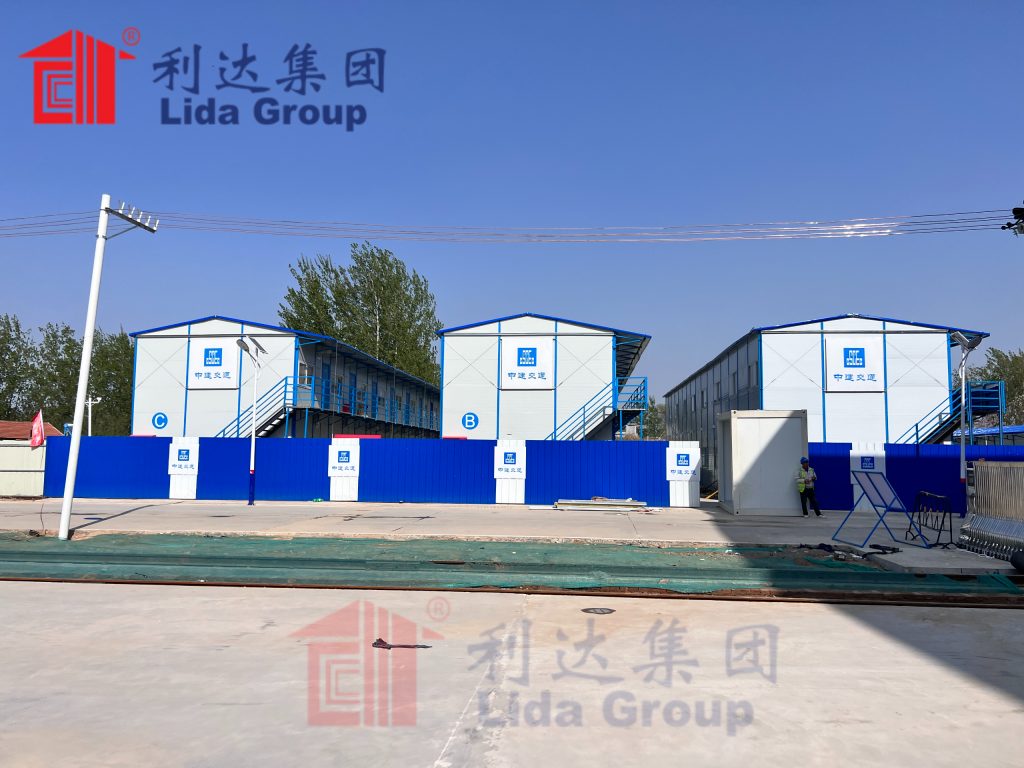
3. Beyond Work Sites: Emergency, Residential, and Commercial Adaptations
3.1 Disaster Relief and Humanitarian Camps
Lida’s units excel in emergency scenarios where speed and reliability save lives. Following natural disasters in Sichuan and Haiti, the company deployed flat-pack container villages that housed 10,000+ refugees within weeks. These units included sanitation facilities, clinics, and child-friendly spaces, all designed to withstand aftershocks and heavy rainfall. In conflict zones like Libya and Angola, Lida’s prayer halls and community centers have become vital hubs, their fireproof and blast-resistant panels offering security in volatile environments.
Humanitarian clients value the units’ low maintenance: galvanized steel requires no repainting for 10 years, and modular components simplify repairs. A UN representative stated, “Lida’s structures reduced our operational overhead by 30% compared to traditional tents, and their recyclability aligned with our zero-waste goals”.
3.2 Residential and Tourism Developments
The adaptability of Lida’s units has made them a staple in residential and tourism sectors. In China’s Zhejiang province, the company’s custom container villas blend modern aesthetics with rural landscapes, featuring private terraces and energy-efficient heating systems. These units, priced at \(13,799–\)22,580, offer a cost-effective alternative to traditional homes while cutting construction time by 60%. A homeowner in Hangzhou commented, “It was easy to install, and even my tech-averse family adapted quickly. The energy savings have been substantial over two years”.
In tourism, Lida’s modular hotels and kiosks transform underutilized spaces into revenue-generating assets. A 20ft steel container hotel in the Americas, equipped with en-suite bathrooms and smart thermostats, achieved 95% occupancy within its first year. For festivals and pop-up events, expandable units serve as ticket booths, VIP lounges, and rest areas, their portability allowing organizers to reconfigure layouts between events.
3.3 Urban and Commercial Spaces
Lida’s prefab units are redefining urban infrastructure, particularly in high-cost cities. In Dubai and Singapore, the company’s modular offices and retail kiosks occupy vacant lots, providing flexible workspace for startups and pop-up stores. These units feature floor-to-ceiling windows, HVAC systems, and sound insulation, competing with traditional brick-and-mortar spaces at 50% of the cost.
Educational and healthcare facilities further demonstrate versatility. A modular school in Poland, constructed for 200 students, included classrooms, a library, and a science lab, all compliant with EU safety standards. In rural Indonesia, Lida’s clinics with built-in medical storage and examination rooms have improved healthcare access, their portable design allowing relocation to underserved villages.
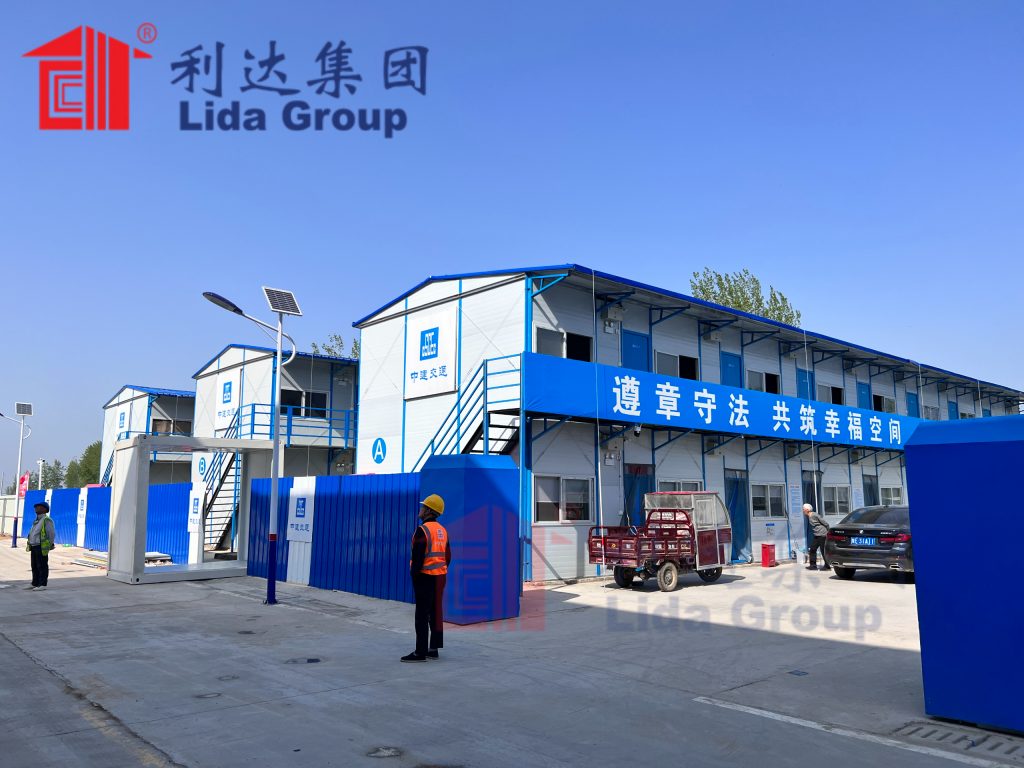
4. Event Villages: The Pinnacle of Versatility
4.1 Designing for Large-Scale Events
Event villages represent the most sophisticated application of Lida’s versatility, requiring units to balance aesthetics, functionality, and rapid deployment. For the 2023 Qingdao International Expo, the company created a 500-unit village featuring dormitories, catering halls, and media centers. The units were customized with branded exteriors and modular furniture, and their flat-pack design enabled installation in 10 days—critical for the event’s tight schedule.
Sports events demand even higher standards of comfort and security. Lida’s athlete villages for regional games in Saudi Arabia included luxury 40ft expandable units with en-suite bathrooms, gyms, and meeting rooms. These units were equipped with smart access control and climate management systems, ensuring athlete well-being while adhering to FIFA and IOC guidelines.
4.2 Sustainability in Event Infrastructure
Event organizers increasingly prioritize eco-friendly solutions, and Lida’s units deliver on this front. For a music festival in France, the company deployed solar-powered container bars and restrooms that generated 30% of their energy on-site. Rainwater harvesting systems reduced water usage by 50%, and post-event, 98% of materials were recycled or relocated to a nearby construction camp. This circular approach aligns with the global manufactured housing market’s shift toward sustainability, which is projected to drive 5.4% CAGR through 2032.
4.3 Post-Event Repurposing
A key advantage of Lida’s event villages is their second-life potential. After the 2024 Shanghai Auto Show, 300 dormitory units were relocated to a mining camp in Australia, where they now serve as worker accommodations. This repurposing saved the mining company $2 million in new construction costs and reduced landfill waste by 150 tons. Such flexibility positions Lida’s units as a long-term investment rather than a disposable expense.
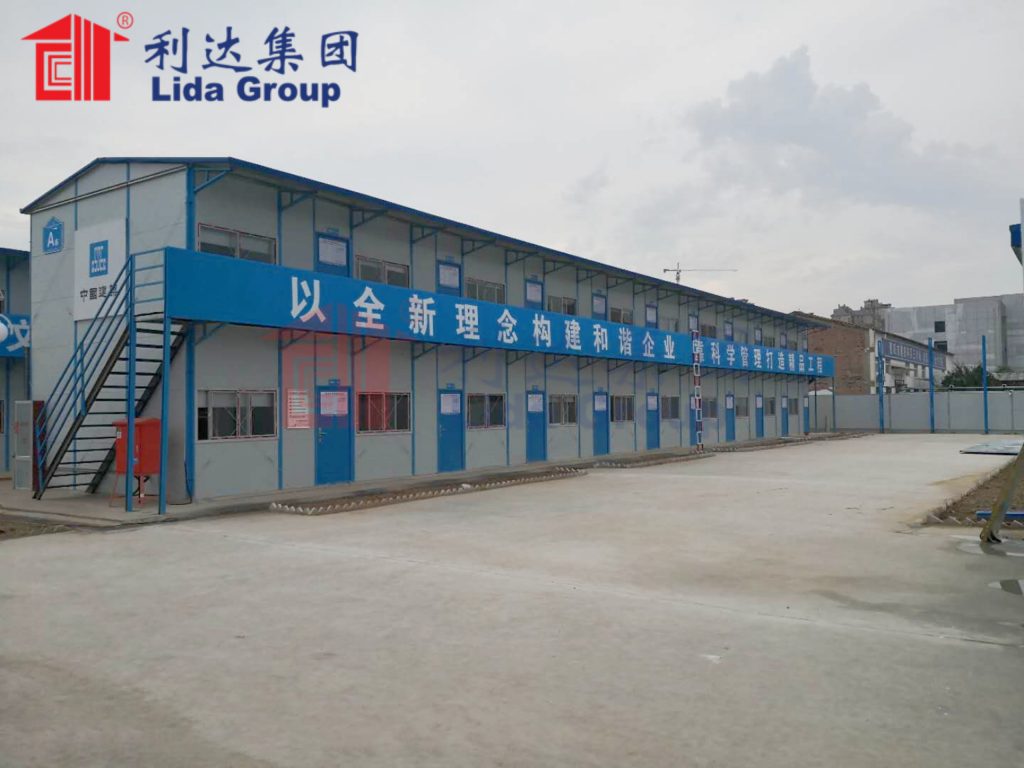
5. Market Impact and Future Trends
5.1 Global Market Penetration
Lida Group’s versatility has fueled its expansion into 140+ countries, with strongholds in Asia Pacific, the Middle East, and Eastern Europe. Its monthly production capacity of 800 units meets demand from sectors as diverse as oil & gas (35% of sales), construction (25%), and tourism (20%). In the B2B market, Lida’s units dominate Alibaba’s top-selling lists, with prices ranging from \(560 for basic models to \)7,990 for luxury expandable units—competitive with peers while offering superior durability.
5.2 Industry Trends Shaping Innovation
The global manufactured housing market, valued at $109.4 billion in 2024, is being driven by affordable housing shortages and remote work trends. Lida is responding with smart-home integrated units featuring solar panels, IoT-enabled energy management, and modular furniture systems. The company’s 2025 product line includes AI-optimized logistics for faster deployment and 3D-printed sandwich panels that reduce production time by 20%.
Another emerging trend is the integration of biophilic design. Lida’s latest tourist villas incorporate living green walls and natural light maximization, appealing to eco-conscious travelers willing to pay premium prices. A prototype in Bali achieved 20% higher booking rates than traditional villas, demonstrating market demand for sustainable luxury.
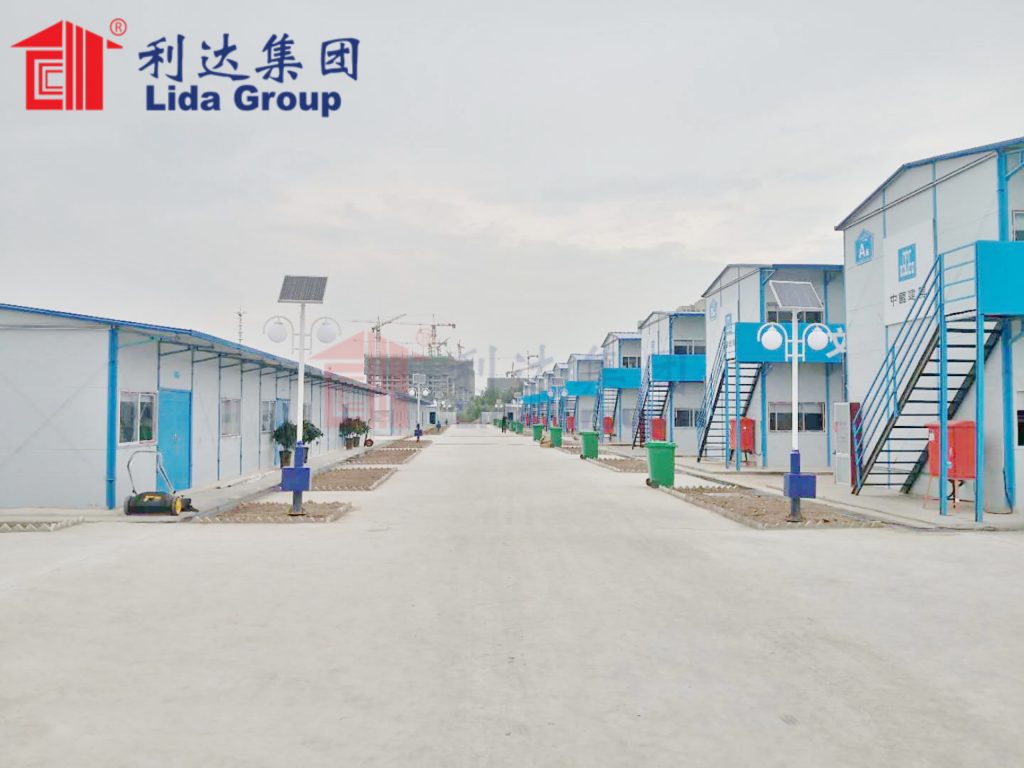
6. Conclusion
Lida Group’s temporary prefab mobile house units have transcended their industrial origins to become a linchpin of diverse global infrastructure. What began as practical solutions for construction camps now encompasses event villages, disaster relief hubs, luxury villas, and urban commercial spaces—all unified by a core of engineering excellence, modular flexibility, and sustainability.
The company’s success stems from its ability to balance standardization with customization: standard 20ft/40ft units ensure scalability and cost efficiency, while tailored designs meet sector-specific needs—from Arctic insulation to event aesthetics. Real-world validate this approach: 30% faster project completion in Eastern Europe, 45% lower energy use in the Arctic, and 95% occupancy in tourism developments.
As the global demand for adaptable, eco-friendly construction grows, Lida Group is poised to lead. Its ongoing innovations—smart technology integration, biophilic design, and circular economy practices—ensure its units will remain versatile enough to meet tomorrow’s challenges, whether in remote mining sites, bustling event venues, or rapidly urbanizing cities. In essence, Lida’s prefab units are more than buildings; they are flexible, sustainable solutions that redefine how we live, work, and gather in an ever-changing world.

Related news
-
From Construction Camps to Event Villages: The Versatility of Lida Group's Temporary Prefab Mobile House Units
2025-10-28 09:26:59
-
Sustainable and Affordable: Lida Group's Temporary Prefab Building Solutions Feature Eco-Friendly Low-Cost Sandwich Panel Walls
2025-10-24 14:53:43
-
Transforming Remote Site Accommodation: Lida Group's Low-Cost Sandwich Panel Houses Offer Superior Temporary Living Spaces
2025-10-24 17:47:07
contact us
- Tel: +86-532-88966982
- Whatsapp: +86-13793209022
- E-mail: sales@lidajituan.com


